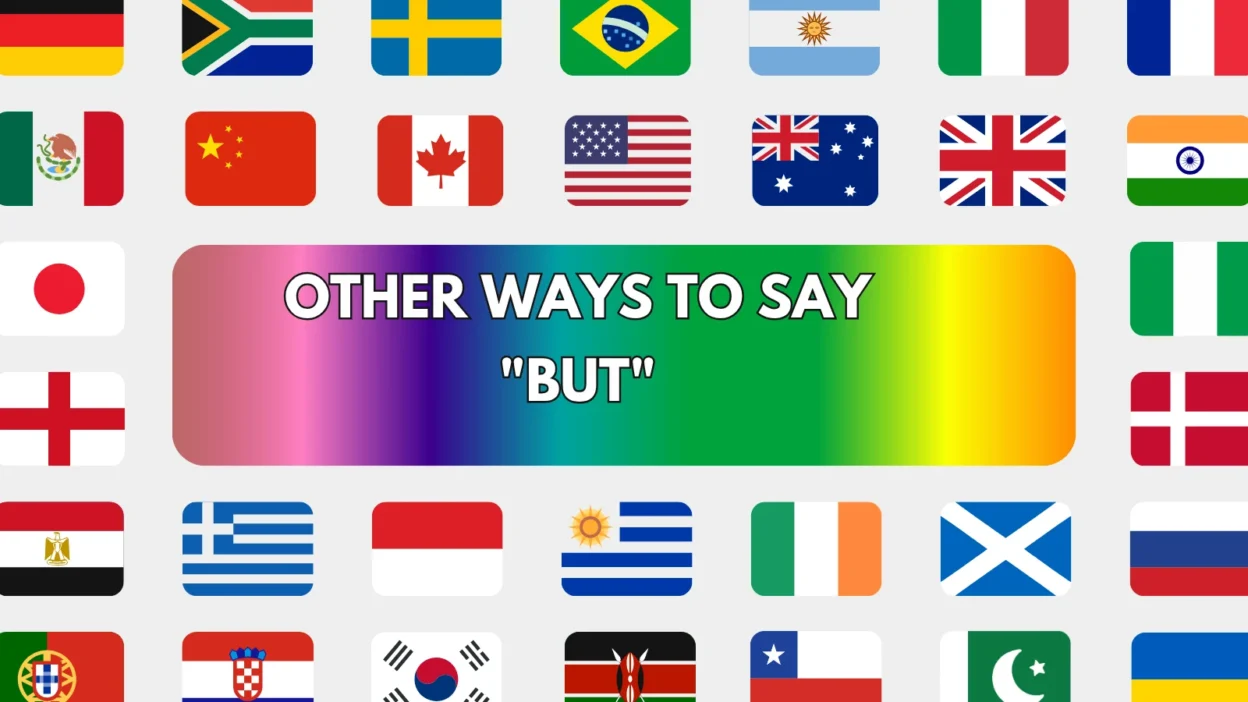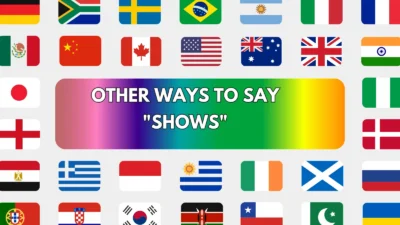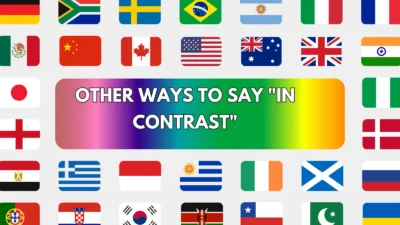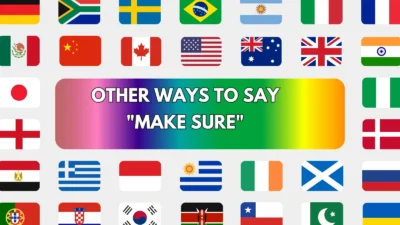The word “but” is one of the most commonly used conjunctions in English. It introduces contrast, contradiction, or exception. While short and effective, relying on “but” too often can make your writing repetitive or too simple.
If you want your writing or speech to sound more refined, varied, or formal, using alternatives to “but” can make a big difference. Below are 25 smart substitutes for “but”, each explained to help you use them accurately and appropriately.
1. However
Meaning:
Shows contrast or contradiction with what was previously stated.
Detailed Explanation:
More formal than “but” and often used at the beginning of a new sentence or clause. Ideal for writing and presenting contrasting points smoothly.
Scenario Example:
The product has strong features. However, it is priced higher than competitors.
Best Use:
Formal writing, essays, business documents.
Tone:
Professional, neutral, polished.
2. Yet
Meaning:
Introduces a surprising contrast or unexpected outcome.
Detailed Explanation:
Similar to “but,” yet has a slightly poetic or dramatic tone. It suggests contradiction despite expectations.
Scenario Example:
He trained every day, yet he lost the match.
Best Use:
Narrative writing, storytelling, speeches.
Tone:
Emotional, expressive, smooth.
3. Nevertheless
Meaning:
Used to introduce a contrast while emphasizing the strength of both ideas.
Detailed Explanation:
Adds a formal and assertive tone. Suggests something is true even though the previous idea might imply otherwise.
Scenario Example:
The weather was bad. Nevertheless, the team continued the shoot.
Best Use:
Reports, persuasive writing, debates.
Tone:
Strong, formal, convincing.
4. Nonetheless
Meaning:
Indicates that the second statement is still true, despite the first.
Detailed Explanation:
Interchangeable with “nevertheless” but sounds slightly softer.
Scenario Example:
He had limited experience. Nonetheless, he was hired for the role.
Best Use:
Academic writing, professional settings.
Tone:
Balanced, formal, respectful.
5. Although
Meaning:
Shows a contradiction between two clauses.
Detailed Explanation:
Often used at the start of a sentence. It connects two ideas that don’t fully align.
Scenario Example:
Although the app is easy to use, it lacks advanced features.
Best Use:
Essays, structured arguments, reviews.
Tone:
Neutral, smooth, informative.
6. Though
Meaning:
Adds contrast in a softer or more informal way than “although.”
Detailed Explanation:
More conversational and flexible. Can be placed at the end of a sentence too.
Scenario Example:
The event was fun. It was a bit long, though.
Best Use:
Casual writing, conversations, blog posts.
Tone:
Relaxed, friendly, informal.
7. Still
Meaning:
Suggests persistence or continuation despite a condition.
Detailed Explanation:
Emphasizes that something continues to be true in contrast with what came before.
Scenario Example:
The task was difficult. Still, we managed to complete it on time.
Best Use:
Storytelling, reflective writing.
Tone:
Simple, smooth, thoughtful.
8. On the Other Hand
Meaning:
Introduces an opposing viewpoint or contrasting idea.
Detailed Explanation:
Common in structured writing when comparing two sides or perspectives.
Scenario Example:
This package is affordable. On the other hand, it includes fewer features.
Best Use:
Comparisons, balanced arguments, business presentations.
Tone:
Analytical, organized, formal.
9. Even So
Meaning:
Indicates that something is true despite previous statements.
Detailed Explanation:
Used to emphasize unexpected outcomes.
Scenario Example:
He explained everything clearly. Even so, they seemed confused.
Best Use:
Narrative writing, personal opinions.
Tone:
Surprising, reflective, casual.
10. Despite That
Meaning:
Shows that the second action occurred regardless of the first condition.
Detailed Explanation:
A direct alternative to “but,” useful for connecting contrasting thoughts clearly.
Scenario Example:
They warned us about delays. Despite that, we continued the trip.
Best Use:
Emails, essays, real-life examples.
Tone:
Neutral, straightforward.
11. Whereas
Meaning:
Shows a contrast between two facts or situations.
Detailed Explanation:
Often used in legal or academic writing to emphasize distinction.
Scenario Example:
John prefers tea, whereas Mary always chooses coffee.
Best Use:
Comparative essays, formal discussions.
Tone:
Formal, logical, direct.
12. That Said
Meaning:
Acknowledges the previous point before presenting a contrasting one.
Detailed Explanation:
Good for softening transitions and showing respect to both sides.
Scenario Example:
The results were impressive. That said, we need to prepare for challenges ahead.
Best Use:
Professional writing, opinion pieces.
Tone:
Balanced, conversational, nuanced.
13. Alternatively
Meaning:
Offers a different option or approach.
Detailed Explanation:
Useful when providing options or suggesting other paths.
Scenario Example:
We could go with the original design. Alternatively, we can explore a minimal look.
Best Use:
Creative proposals, decision-making emails.
Tone:
Suggestive, clear, professional.
14. Albeit
Meaning:
Means “although” but used within a sentence to soften contrast.
Detailed Explanation:
Often used to acknowledge limitations or conditions.
Scenario Example:
The software is effective, albeit expensive.
Best Use:
Sophisticated writing, critiques.
Tone:
Refined, formal, intelligent.
15. Then Again
Meaning:
Introduces a shift in opinion or second thought.
Detailed Explanation:
Often used to reconsider something or show change of mind.
Scenario Example:
I thought the price was fair. Then again, it might be too much for some.
Best Use:
Personal blogs, informal writing.
Tone:
Reflective, casual, honest.
16. Notwithstanding
Meaning:
Formal way to express that something happens despite another factor.
Detailed Explanation:
Usually used in legal or technical writing.
Scenario Example:
Notwithstanding the challenges, the team delivered exceptional results.
Best Use:
Formal reports, academic texts.
Tone:
Authoritative, formal, strong.
17. In Contrast
Meaning:
Used to clearly show the difference between two things.
Detailed Explanation:
Highlights a deliberate comparison.
Scenario Example:
Sales dropped in Q1. In contrast, Q2 saw significant growth.
Best Use:
Reports, comparative writing.
Tone:
Analytical, structured, formal.
18. Instead
Meaning:
Shows a change from one option or direction to another.
Detailed Explanation:
Simple and effective — used to present alternatives or redirection.
Scenario Example:
We didn’t go with option A. Instead, we focused on solution B.
Best Use:
Decision emails, proposals, updates.
Tone:
Direct, clear, neutral.
19. Though (Starting a Sentence)
Meaning:
Used like “however” at the beginning of a contrast.
Detailed Explanation:
Less formal than “however,” good for easygoing tone.
Scenario Example:
Though the plan was risky, it paid off in the end.
Best Use:
Conversations, blog posts, storytelling.
Tone:
Natural, friendly, flowing.
20. Be That As It May
Meaning:
Acknowledges the truth of something but introduces a different or opposing view.
Detailed Explanation:
Often used to transition respectfully to another opinion.
Scenario Example:
Be that as it may, we have to move forward with our plan.
Best Use:
Formal opinions, conflict resolution.
Tone:
Mature, respectful, polished.
21. Conversely
Meaning:
Presents an opposing or opposite viewpoint.
Detailed Explanation:
Ideal for analytical and structured writing.
Scenario Example:
Some prefer structure. Conversely, others thrive in creative chaos.
Best Use:
Academic, contrast essays.
Tone:
Logical, intellectual, formal.
22. Even Though
Meaning:
Highlights a contradiction, like “although.”
Detailed Explanation:
Makes the contrast feel more emotional or personal.
Scenario Example:
Even though he was tired, he kept working.
Best Use:
Narrative writing, storytelling.
Tone:
Empathetic, warm, clear.
23. Only
Meaning:
In some contexts, “only” can replace “but” for contrast.
Detailed Explanation:
Adds contrast in a unique and less direct way.
Scenario Example:
I would join you, only I’m tied up at work.
Best Use:
Dialogues, informal writing.
Tone:
Mild, casual, expressive.
24. All the Same
Meaning:
Expresses that something is true regardless of previous facts.
Detailed Explanation:
Adds contrast while maintaining a conversational flow.
Scenario Example:
He apologized. All the same, she felt hurt.
Best Use:
Emails, narratives, casual writing.
Tone:
Thoughtful, reflective, soft.
25. Rather
Meaning:
Introduces a preferred or corrected statement.
Detailed Explanation:
Refines or adjusts the previous statement.
Scenario Example:
It wasn’t a bad day, rather, it was surprisingly productive.
Best Use:
Formal and informal writing, corrections.
Tone:
Refined, thoughtful, nuanced.
Conclusion
Using “but” repeatedly can weaken your writing. By exploring these 25 strong alternatives, you can communicate contrast, nuance, and refinement with more variety. Whether you’re writing a formal report, an engaging blog, or a casual email — these phrases will elevate your message.




